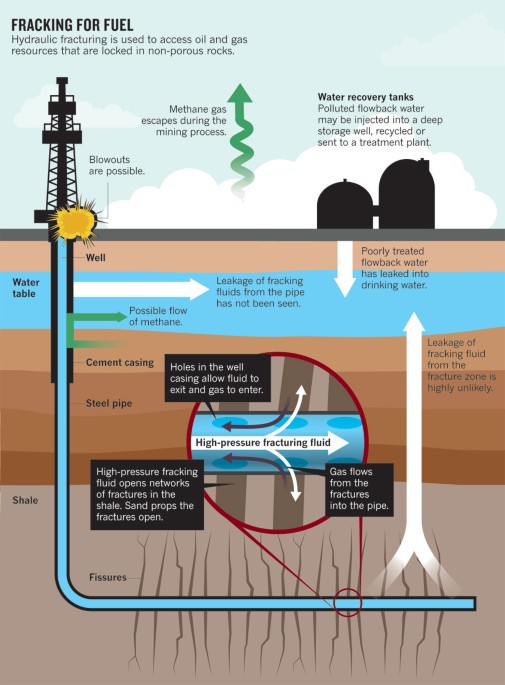
Is shale natural gas extraction sustainable for energy

The debate surrounding the sustainability of shale natural gas extraction has gained momentum in recent years, as this energy source has become increasingly significant in meeting global energy demands. Shale gas, originating from organic material trapped within ancient rock formations, is often viewed as a bridge fuel towards a cleaner energy future. However, the methods employed for extraction, along with their environmental implications, are at the forefront of discussions on sustainability.
As the United States currently relies on shale natural gas for a substantial portion of its energy supplies, understanding the implications of this reliance is vital. With advances in technology propelling up production levels, it is important to evaluate whether this energy extraction method can continue to meet energy needs without compromising environmental integrity or sustainability.
- Overview of Shale Natural Gas
- The Process of Shale Gas Formation
- Advances in Drilling Technology
- Current Impact on U.S. Energy Production
- The Role of Coal-Bed Methane
- Geopressured Reservoirs: Challenges and Potential
- Methane Hydrates: The Untapped Resource
- Environmental Concerns and Sustainability Issues
- Economic Viability of Shale Gas Extraction
- Future Prospects for Shale Natural Gas
- Conclusion: Weighing the Benefits and Risks
Overview of Shale Natural Gas
Shale natural gas is a type of natural gas that is trapped within shale formations. Shale is a fine-grained sedimentary rock that is rich in organic material. Over millions of years, the organic mud in ancient water bodies undergoes heat and pressure, transforming into a variety of hydrocarbons, including natural gas. While some of this gas migrates into adjacent sandstone formations, where it can be accessed more easily through traditional drilling methods, a significant amount remains trapped within the shale itself.
This trapped gas can be extracted through more advanced techniques developed over the last few decades. The emergence of horizontal drilling and hydraulic fracturing has enabled energy companies to efficiently tap into these resource-rich shale deposits, leading to a marked increase in U.S. natural gas production. Today, shale gas represents approximately 25% of the nation's total gas output, a figure that is projected to climb to around 50% by mid-century.
The Process of Shale Gas Formation
The formation of shale natural gas is a multi-step process that begins with the burial of organic matter in sedimentary basins. Over time, geological forces apply heat and pressure, converting this organic material into hydrocarbons. This transformation primarily occurs during the diagenesis and catagenesis phases of geological development.
As the organic materials decompose, they produce various forms of hydrocarbons, including natural gas and oil. The process is complex, affected by the type of organic material, the thermal history of the rock, and the pressures exerted over geological time. Notably, shale formations are characterized by their low permeability, preventing natural gas from flowing freely without targeted extraction efforts.
Advances in Drilling Technology
Technological advancements have revolutionized the process of extracting shale natural gas. The introduction of horizontal drilling has been particularly significant, allowing energy producers to access vast areas of gas reserves horizontally after drilling vertically. This technique maximizes exposure to the gas-rich areas of the formation.
Additionally, hydraulic fracturing or "fracking" has become a standard practice for creating permeable pathways within the shale formations. During this process, high-pressure fluid is injected into the rock to create fractures, facilitating the release of trapped natural gas. These advancements have vastly increased production rates while contributing to the economic viability of shale gas extraction.
Current Impact on U.S. Energy Production
The impact of shale natural gas on the U.S. energy landscape has been profound. As domestic production increased dramatically due to improved extraction technologies, the country has witnessed a significant reduction in dependence on imported fossil fuels. This transition not only enhances energy security but also generates economic benefits, including job creation in extraction and related industries.
Moreover, shale gas serves as a cleaner-burning alternative to coal. As many energy producers shift from coal to natural gas in their operations, this transition has prompted a measurable decrease in greenhouse gas emissions in the U.S. sector. Currently, shale gas is estimated to contribute around 25% of total energy consumption, with potential to increase further as infrastructure and production methods improve.
The Role of Coal-Bed Methane
Coal-bed methane (CBM) is another significant player in the natural gas sector. This type of methane is found in coal seams and can often be accessed through techniques similar to those used in shale gas extraction. By drilling into coal seams and pumping out water, producers can release the trapped methane, contributing nearly 10% of the total U.S. gas output.
Though production of coal-bed methane has been eclipsed by the strides made in shale gas, it still represents an essential aspect of the broader natural gas landscape. Its extraction methods offer lessons and parallels to those used in shale formations, indicating the interconnected nature of these energy resources.
Geopressured Reservoirs: Challenges and Potential
Geopressured reservoirs are another untapped facet of the natural gas landscape. These geological formations, characterized by high fluid pressures and temperatures, may contain substantial amounts of natural gas. However, the challenges in geopressured gas extraction stem from the necessity for large-scale water extraction, which complicates commercial production efforts and presents environmental concerns.
Despite these challenges, the potential of geopressured reservoirs remains significant. If technological advances can be embraced to efficiently extract gas from these environments, it may yield an important boost to the American energy portfolio. The quest for innovation in this sector highlights the importance of sustainability in natural gas production.
Methane Hydrates: The Untapped Resource
Methane hydrates, found in polar permafrost zones and beneath ocean floors, present another promising yet largely untapped resource for natural gas. These icy structures trap vast quantities of methane, and their potential as an energy source is enormous. However, extraction has yet to become commercially viable due to complex challenges in accessing this resource and concerns over environmental impacts.
The exploration of methane hydrate extraction offers both potential benefits and risks. Further research into feasible extraction methods must be considered in light of its implications for global energy supplies and the health of marine and permafrost ecosystems. Sustainable approaches may dictate the future use of this resource.
Environmental Concerns and Sustainability Issues
The rise of shale natural gas extraction has not come without its share of environmental concerns. One of the foremost criticisms relates to the practice of hydraulic fracturing, which has raised alarms over water pollution and excessive water usage. The environmental footprint of drilling activities and the management of produced wastewater warrants scrutiny and effective regulation.
Additionally, methane leakage during extraction is another significant concern associated with hydraulic fracturing. Methane is a potent greenhouse gas, and even minor leaks can undermine the climate benefits of shifting to natural gas from coal. Balancing energy production with environmental responsibilities necessitates ongoing assessments, innovation, and regulatory frameworks to safeguard ecosystems.
Economic Viability of Shale Gas Extraction
The economic viability of shale gas extraction remains a central issue in discussions surrounding its sustainability. The initial investment for drilling and production is significant, raising questions about profitability, particularly in times of fluctuating market prices. However, as production technology continues to innovate and become more efficient, the potential for economic returns grows.
Moreover, the indirect economic benefits surrounding shale gas development are noteworthy. The extraction and production of natural gas can lead to job creation, contributing positively to local economies while enhancing energy independence. As domestic energy production rises, it establishes the U.S. as a competitive player in the global energy market.
Future Prospects for Shale Natural Gas
The future of shale natural gas extraction appears promising, particularly with advancements in technology and growing commitments to employment and production. The federal energy strategy aims to maximize domestic resources while maintaining a focus on sustainability and environmental protection.
As companies aim to refine extraction processes and reduce environmental impacts, the future landscape of natural gas may well be defined by innovative practices that align profitability with environmental stewardship. The balance between capitalizing on shale gas resources and protecting natural ecosystems will dictate the trajectory of this energy source.
Conclusion: Weighing the Benefits and Risks
In conclusion, the sustainability of shale natural gas extraction is a complex issue that demands careful consideration of environmental impacts, economic viability, and technological innovation. While advances in drilling techniques have significantly increased production, the accompanying environmental concerns must be addressed to ensure that this energy source does not compromise ecological integrity.
As we continue to rely more on shale natural gas in our energy portfolios, it is crucial to weigh the benefits against the inherent risks. A sustainable approach will require collaboration among stakeholders, regulators, and companies in the sector. Addressing the challenges posed by shale gas extraction poses a path forward toward a balanced energy future that respects both our economic and environmental needs.
Did you find this article helpful? Is shale natural gas extraction sustainable for energy See more here Education.
Leave a Reply






Related posts